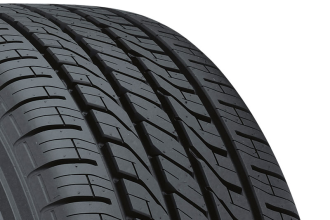When you’re working on your website, one of the most important things to keep in mind is performance. If your website doesn’t perform well, it will reflect poorly on your business. There are a number of ways to improve your website’s performance, and in this blog post, we’ll go over some of the most important ones. By following these tips, you can be sure that your website is running as smoothly and efficiently as possible.
Focus On Your SEO
There is no denying the significance of SEO for any website. If you want your website to perform well, you need to make sure that it’s optimized for search engines. There are a number of ways to do this, and it can be helpful to hire an SEO expert to help you out. However, there are also a few things that you can do on your own to improve your website’s SEO.
One of the most important things is to focus on your keywords. Make sure that you’re using relevant keywords in your content, and that they’re placed strategically throughout your website. You can also get an SEO audit to see where your website could use improvement. By following these tips, you can be sure that your website is as visible as possible to potential customers.
Compress Your Images And Files
It’s important to remember that not all images are created equal. When you’re adding images to your website, you need to make sure that they’re the right size. If they’re too large, they’ll take longer to load, and this will negatively impact your website’s performance.
On the other hand, if they’re too small, they’ll look pixelated and low-quality. The best way to avoid this is to compress your images before you upload them to your website. By doing this, you can make sure that they’re the right size without sacrificing quality.
Make It Mobile Friendly
As more and more people use their mobile devices to browse the internet, it’s becoming increasingly important to make sure that your website is mobile-friendly. If your website isn’t optimized for mobile, it will load slowly and be difficult to navigate. This will frustrate potential customers and cause them to leave your site.
You can take a few steps to make sure that your website is responsive to mobile devices. First, you need to make sure that your design is responsive. It will therefore change to fit any screen size, according to this.
Second, you need to compress your images so that they load quickly on mobile devices. Finally, you need to test your site on different devices to make sure that it looks and functions as it should. By following these tips, you can be sure that your website is accessible to everyone.
Implement Browser Caching
Browser caching is a process whereby a browser stores local copies of files from websites that the user has visited. This helps to improve performance when revisiting those websites, as the browser doesn’t need to re-download all of the files from scratch each time. Implementing browser caching correctly can help to speed up page load times, and improve the overall user experience
There are a few things to keep in mind when implementing browser caching. First, you need to make sure that you set appropriate expiry times for your cached files. This will ensure that they’re updated regularly and that users always have the most up-to-date version. Second, you need to consider what type of files you want to cache. Caching large files can be beneficial, but it’s also important to make sure that you don’t cache too many files, as this can lead to issues.
Reduce 404 Errors
One of the most frustrating things for users is encountering a 404 error when trying to load a website. These errors can be caused by a number of things, but they’re often the result of outdated or broken links. If you want to avoid 404 errors, it’s important to regularly check your website for broken links. You can use a tool like Screaming Frog to help with this.
In addition, you need to make sure that you’re redirecting any broken links to working pages. This will ensure that users don’t run into any errors when trying to navigate your website. By taking these steps, you can reduce the number of 404 errors on your site and improve the overall user experience.
Use GZIP Compression
Gzip is a software program and file format for compressing and decompressing files. The software is also used for further reducing the size of a file by compressing it. Gzip is often used on text files, such as HTML, CSS, and JavaScript. When applied to a file, Gzip typically reduces the size of the file by 70-80%. This can dramatically reduce the amount of time it takes to download a file, as well as save on bandwidth costs.
Use A CDN
A CDN, or content delivery network, is a group of servers that are used to deliver content to users. When a user tries to access a website, the CDN will provide them with the content from the closest server. This helps to improve performance, as it reduces the distance that the data needs to travel. It also helps to improve availability, as it ensures that there are always servers available to deliver content.
CDNs are particularly beneficial for websites that receive a lot of traffic from around the world. By using a CDN, you can be sure that your website is able to handle the traffic and that users are able to access the content they need. However, CDNs can be expensive, so it’s important to weigh the costs and benefits before deciding whether or not to use one.
Specify Character Sets
If you want your website to be accessible to as many people as possible, it’s important to specify a character set. A character set is a group of characters that are used to represent a language. By specifying a character set, you can ensure that your website can be read by users who speak different languages.
In conclusion, there are a number of things you can do to improve your website’s performance. By implementing browser caching, reducing 404 errors, and using Gzip compression, you can significantly improve the speed and efficiency of your website. In addition, by using a CDN and specifying a character set, you can improve the accessibility of your site. By taking these steps, you can provide a better experience for your users and ensure that your website is running at its best.














